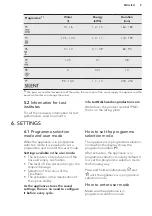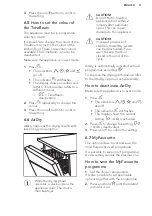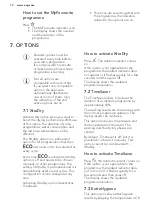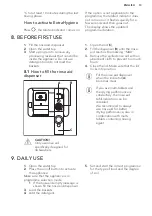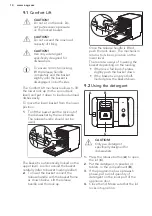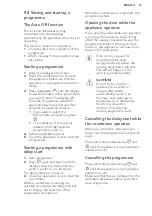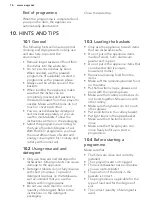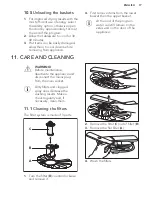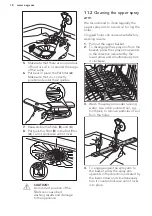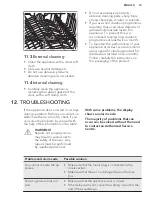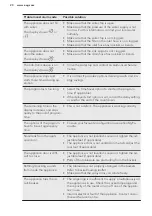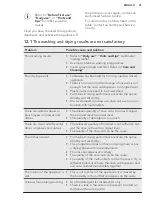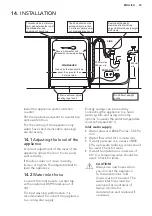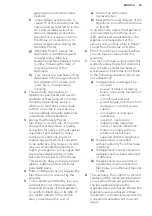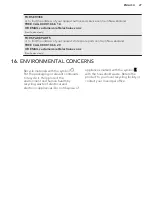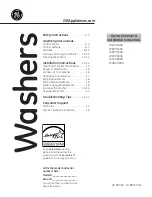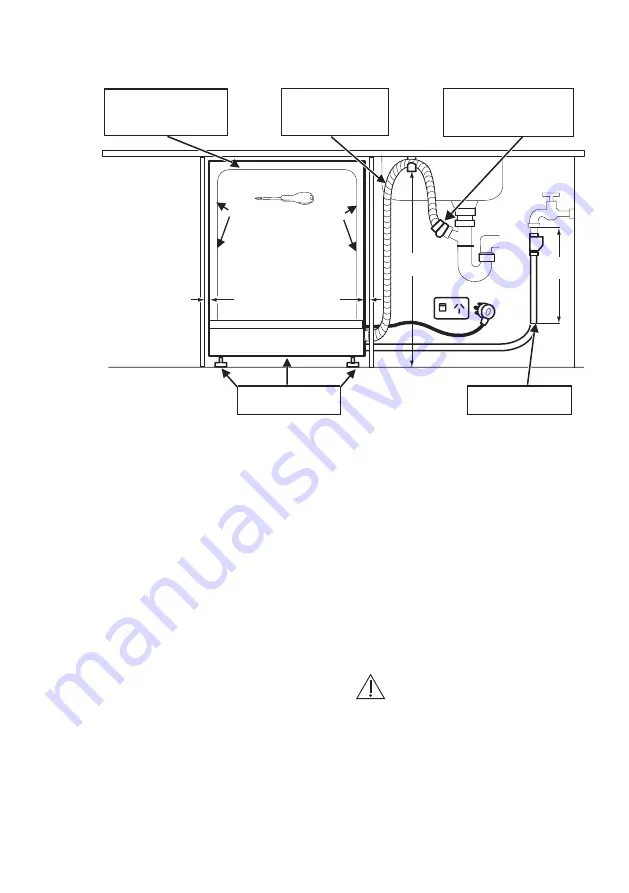
14.
INSTALLATION
If floor is not level, adjust
levelling legs to suit
The hose should not be
extended by more than
2 metres or water pump-
out problems may occur
Remove entire plastic
membrane from sink trap
spigot & fit drain hose to spigot
with clamp
There should be a minimum
2mm gap between the top of
the dishwasher and
underside of bench top
Gap on both sides should be
equal, & no greater than
5 mm per side.
Secure dishwasher with
brackets or screws provided
Min. 400 mm straight
section
600mm max
300mm min
400mm
min
DISHWASHER
SINK
POWER OUTLET
Install the appliance under a kitchen
counter.
Put the appliance adjacent to a water tap
and a water drain.
For the venting of the appliance only
water hoses and mains cable openings
are necessary.
14.1
Adjusting the level of the
appliance
A correct adjustment of the level of the
appliance allows the door to close and
seal correctly.
If the door does not close correctly,
loosen or tighten the adjustable feet to
level the appliance.
14.2
Water inlet hose
Connect the inlet hose to a water tap
with an external BSP thread spout of
3/4''.
For best washing performance it is
recommended to connect the appliance
to a cold water supply.
Energy savings can be made by
connecting the appliance to a Solar
water system and using economy
options, however the water temperature
must not exceed 60° C.
Inlet water supply
• Water pressure: 800 kPa max - 50 kPa
min.
• Water flow rate 10 L / minute min.
• If water pressure is in excess of 800
kPa, a pressure reducing valve should
be used. Check for leaks.
• If water temperature is in excess of
60° C, a tempering valve should be
used. Check for leaks.
CAUTION!
Always use new hoses when
you connect the appliance
to the water mains. Old
hoses must not be used. The
water inlet hose must be
examined at an interval of
twelve months for
deterioration and replaced if
necessary.
ENGLISH
23

